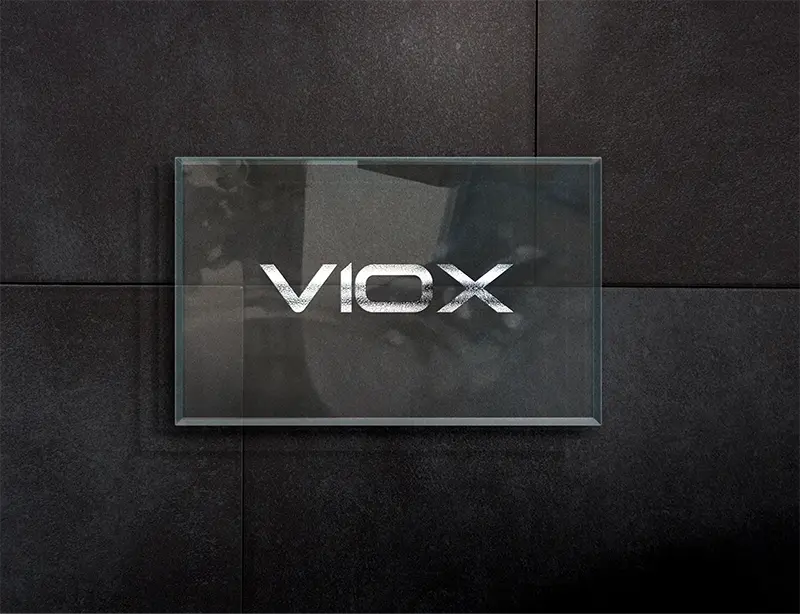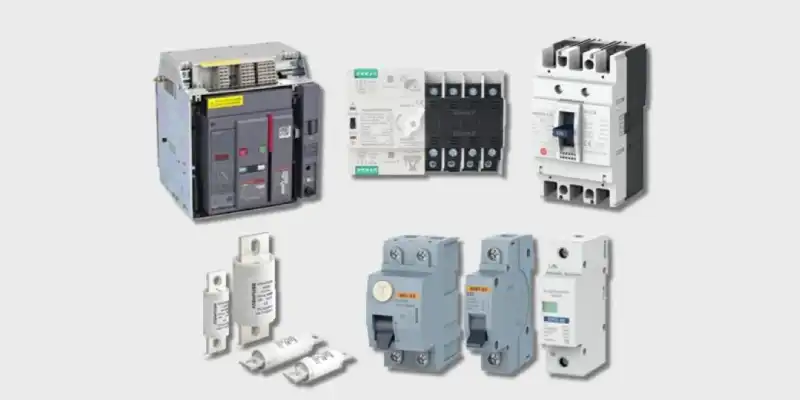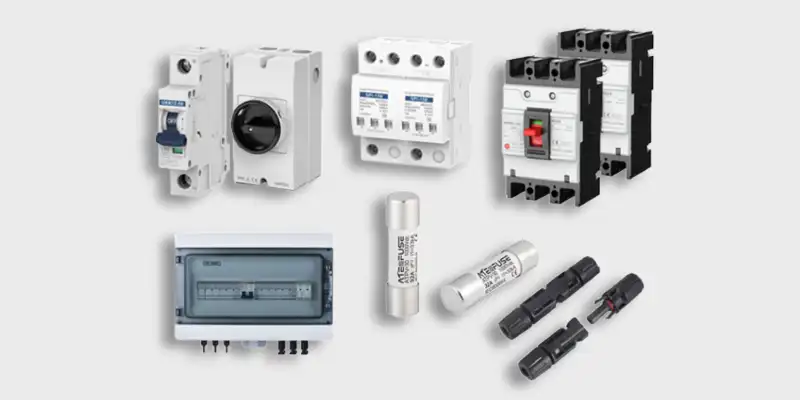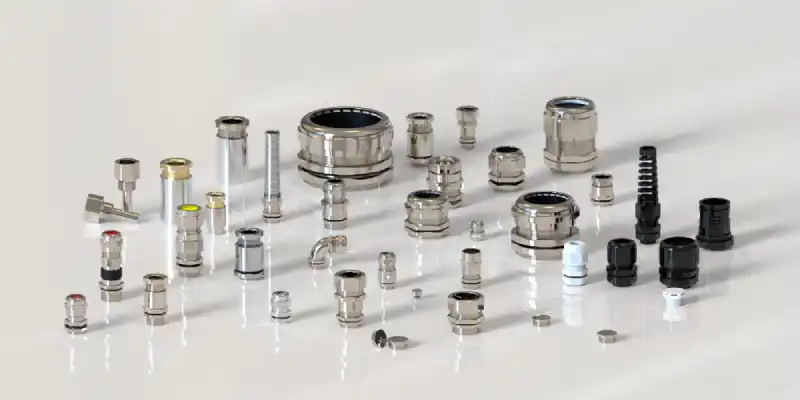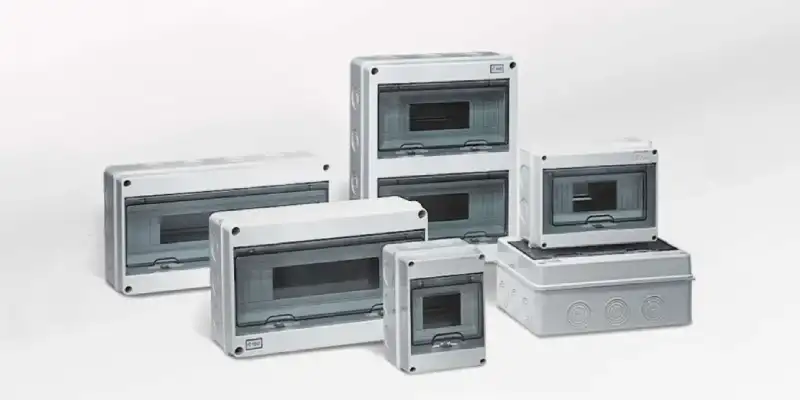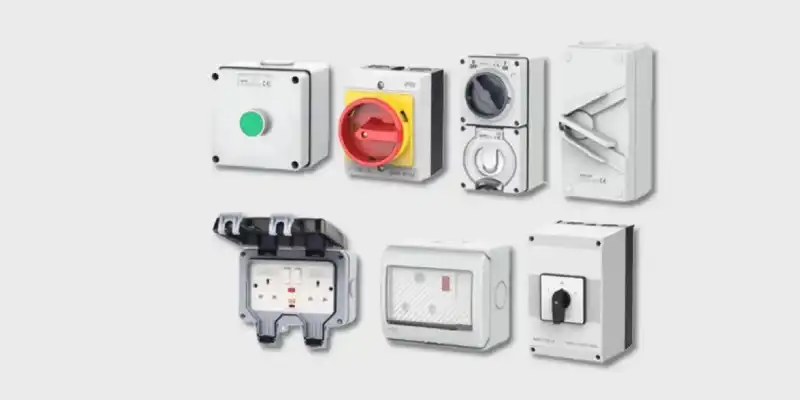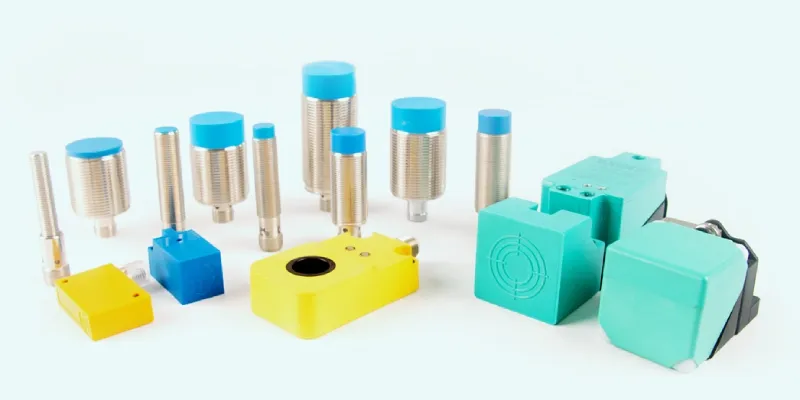I. Introduction
A. Definition of a PV Solar Combiner Box
A solar combiner box is a crucial component in solar energy systems, designed to consolidate the outputs of multiple solar panel strings into a single output that connects to an inverter. This device plays a significant role in both residential and commercial solar installations, particularly when managing a large number of solar panels.
B. Importance in solar power systems
Efficiency: By streamlining connections and minimizing wiring, combiner boxes contribute to more efficient energy distribution within solar power systems. This efficiency is particularly important in larger installations with multiple strings of panels, where managing numerous connections can become complex.
Cost-Effectiveness: The reduction in wiring complexity not only saves on material costs but also lowers installation labor costs. For large-scale solar projects, this can lead to significant savings overall.
Enhanced Reliability: With built-in protective features, combiner boxes help ensure that the inverter operates safely and reliably. They protect against electrical faults that could lead to system failures or safety hazards.
Adaptability: While smaller residential systems may not require a combiner box if they have only one to three strings, larger systems—ranging from four strings up to thousands—benefit greatly from their use. This adaptability makes combiner boxes suitable for both residential and commercial applications.
II. Basics of PV Solar Combiner Boxes
A. Function and purpose
Combining Outputs: The main function of a solar combiner box is to consolidate the direct current (DC) outputs from multiple solar panel strings into a single output. This simplifies the connection to the inverter, which converts DC power to alternating current (AC) for use in homes and businesses.
Minimizing Wiring Complexity: By bringing together the outputs from several strings, combiner boxes reduce the number of individual wires that need to be run to the inverter. This not only simplifies installation but also minimizes potential points of failure and reduces labor costs associated with wiring.
Overcurrent Protection: Combiner boxes are equipped with protective devices such as fuses or circuit breakers for each input string. These components are crucial for preventing overcurrent situations that could damage the solar panels or other electrical components in the system.
Monitoring Capabilities: Many combiner boxes include monitoring features that allow for tracking the performance of individual solar strings. This capability aids in diagnosing issues and ensuring optimal system performance.
Safety Features: They often incorporate disconnect switches and surge protection devices, which enhance safety by allowing maintenance personnel to isolate the PV array from the rest of the system when necessary.
B. Key components
Solar combiner boxes are integral to solar power systems, serving to combine the outputs of multiple solar panel strings into a single output for the inverter. The effectiveness and safety of these systems rely heavily on the various components housed within the combiner box. Here are the key components typically found in solar combiner boxes:
DC Circuit Breakers
- Function: Protects the circuits from electrical faults by interrupting the flow of current in case of overcurrent situations.
- Details: The number and rating of circuit breakers depend on the size and configuration of the solar system, ensuring that each string can be individually protected.
- Function: Provides string protection by blowing during fault conditions, which disconnects the affected circuit and prevents damage to other components.
- Details: The type and rating of fuses are selected based on the specifications of the solar panels and strings.
Surge Protection Devices (SPDs)
- Function: Protects the system from voltage spikes caused by lightning or other electrical surges.
- Details: SPDs divert excess voltage to ground, safeguarding sensitive equipment like inverters from damage.
- Function: Allows for safe disconnection of power from the solar array for maintenance or emergency situations.
- Details: This switch can isolate specific parts of the system, ensuring safety during servicing.
- Function: Acts as a mechanical conductor that combines multiple circuit outputs into one.
- Details: It is typically located within the box, where all input wires converge before being routed to the inverter.
Additional Components
- Blocking Diodes: Prevent back-feeding of current from one string to another, which can help maintain optimal performance.
- Monitoring Equipment: Advanced combiner boxes may include devices to monitor performance metrics, helping to identify issues quickly.
- Enclosure Material: The box itself is often made from durable materials such as stainless steel or UV-resistant plastics, providing protection against environmental factors.
C. Types of combiner boxes
Solar combiner boxes are essential components in solar photovoltaic (PV) systems, designed to consolidate the outputs of multiple solar panel strings into a single output for connection to an inverter. There are various types of combiner boxes tailored to meet specific needs and configurations in solar installations. Here are the primary types:
Standard DC Combiner Box
Function: Combines the DC outputs from multiple solar strings before they reach the inverter.
Features: Typically includes overcurrent protection devices such as fuses or circuit breakers for each string to ensure safety and prevent damage in case of faults.
String-Level Monitoring Combiner Box
Function: Combines outputs while also monitoring the performance of each string individually.
Features: Allows for real-time monitoring, helping to identify issues such as shading or malfunctions in specific panels, enhancing system management.
Smart Combiner Box
Function: An advanced version that combines outputs, monitors performance, and communicates with other system components.
Features: Integrates with energy management systems and inverters for optimized performance and efficiency.
AC Combiner Box
Function: Used in installations with microinverters or AC modules to consolidate the output from multiple inverters.
Features: Facilitates connection to the main electrical panel, managing AC power distribution effectively.
Bi-Polar Combiner Box
Function: Designed for systems with both positive and negative grounding.
Features: Handles both polarities of DC voltages, essential for certain solar installations that require this configuration.
Hybrid Combiner Box
Function: Used in hybrid systems that incorporate both solar and other power sources, such as wind or generators.
Features: Combines outputs from various sources before connecting to charge controllers or inverters.
Customized Combiner Box
Function: Tailored to meet unique specifications of specific solar installations.
Features: May include additional features like surge protection, lightning arrestors, or specialized components based on project requirements.
Plastic vs. Iron Body Combiner Boxes
Plastic Body: Offers high insulation, corrosion resistance, and is lightweight, making it easy to install and maintain.
Iron Body: Provides high voltage resistance and durability but is heavier; suitable for more rugged applications.
III. Design and Configuration of Solar Combiner Boxes
The design and configuration of solar combiner boxes are crucial for ensuring the efficiency, safety, and reliability of solar power systems. These boxes serve as a central hub for combining the outputs of multiple solar panel strings before they are connected to an inverter. Below are key aspects of their design and configuration.
Enclosure Design
- Materials: Combiner boxes are typically constructed from materials such as metal (painted steel or stainless steel), plastic, or fiberglass. The choice of material affects durability, weight, and resistance to environmental factors.
- NEMA Ratings: Most combiner boxes are designed for outdoor use and have NEMA ratings (such as NEMA 3R, 4, or 4X) that indicate their ability to withstand moisture and dust. A higher NEMA rating provides better protection against harsh weather conditions.
Internal Components
- Overcurrent Protection: Each combiner box includes fuses or circuit breakers for each solar string to protect against overcurrent situations. This is essential for preventing damage to the solar panels and the inverter.
- Junction Blocks: These components facilitate the connection of multiple input wires from solar strings to a single output wire leading to the inverter, reducing wiring complexity.
- Surge Protection Devices: Many combiner boxes incorporate surge protection to safeguard against voltage spikes caused by lightning or other electrical surges.
Cooling Considerations
- Size and Airflow: The size of the combiner box can impact cooling efficiency. Larger enclosures allow for better airflow, which helps dissipate heat generated by internal components. Proper ventilation is essential to prolong the lifespan of the components inside.
- Installation Location: Installing the combiner box in shaded areas (e.g., on a north-facing wall) can reduce heat buildup, enhancing performance and longevity.
Configuration Options
- String-Level Monitoring: Some advanced combiner boxes offer monitoring capabilities that allow users to track the performance of individual strings. This feature is beneficial for identifying issues such as shading or malfunctioning panels.
- Smart Features: Smart combiner boxes may include electronic switches, temperature sensors, and communication interfaces that enable remote monitoring and control.
Compliance and Safety
- Electrical Codes: Combiner boxes must adhere to local electrical codes and regulations to ensure safe installation and operation. This includes proper labeling, grounding, and wire management.
- Accessibility for Maintenance: The design should allow easy access for maintenance personnel to perform inspections or repairs without disrupting system operations.
IV. Selection Criteria
When selecting a solar combiner box for your photovoltaic (PV) system, several key criteria must be considered to ensure compatibility, efficiency, and safety. Below are the most important factors to guide your selection process:
1、Compatibility
System Components: Ensure that the combiner box is compatible with your solar panels, inverter, and any other components in your system. This includes checking voltage and current ratings to match your specific setup.
2、Number of Inputs and Outputs
String Count: Determine how many strings of solar panels you have. Choose a combiner box that can accommodate the total number of inputs from your solar strings and has sufficient output capacity to connect to the inverter.
3、Current Rating
Maximum Current: Select a combiner box with a current rating that can handle the maximum current produced by your solar panel strings. Common ratings are typically below 15A or 20A per string, depending on the specifications of the panels used.
4、Voltage Rating
Choose a combiner box with a voltage rating that matches or exceeds the maximum voltage of your solar power system. This is critical for ensuring safe operation and preventing equipment damage.
5、Safety Features
Protection Mechanisms: Look for combiner boxes that include safety features such as surge protection devices, fuses, and circuit breakers. These components protect your system from electrical faults and potential damage.
6、Monitoring Capabilities
Performance Tracking: If monitoring individual string performance is important for your application, consider a string-level monitoring or smart combiner box. These options allow for real-time performance tracking and can help identify issues quickly.
7、Enclosure Material
Durability: Select a combiner box made from durable materials, such as stainless steel or high-quality polycarbonate, to ensure it can withstand harsh weather conditions and environmental factors.
8、Size and Cooling Considerations
Physical Dimensions: The size of the combiner box should be appropriate for your installation space while allowing for adequate airflow to cool internal components. A larger enclosure can improve cooling efficiency and facilitate easier maintenance.
9、Installation Requirements
Ease of Installation: Consider whether you can install the combiner box yourself or if you will need professional assistance. Some boxes may come with features that simplify installation, while others may require more complex setup procedures.
10、Cost Considerations
Budget: Evaluate the cost of the combiner box in relation to its features and benefits. While it may be tempting to choose cheaper options, investing in high-quality components can lead to better long-term performance and reliability.
V. Installation Best Practices
Installing a solar combiner box is a critical step in setting up a solar photovoltaic (PV) system. Proper installation ensures the efficiency, safety, and reliability of the solar energy system. Here are best practices to follow during the installation process:
1. Preparation and Planning: Review Manufacturer Instructions: Always consult the manufacturer’s guidelines for specific installation procedures and safety recommendations related to the combiner box model being used.
2. Choosing the Right Location
- Proximity to Solar Panels: Install the combiner box close to the solar panels to minimize voltage drop and reduce wiring length. This placement enhances efficiency by ensuring optimal power transmission.
- Accessibility: Ensure that the location allows easy access for maintenance and troubleshooting. A well-placed combiner box facilitates regular inspections and repairs.
- Environmental Protection: Mount the box in a shaded area, such as on a north-facing wall, to reduce direct sunlight exposure. This helps prevent overheating of internal components.
3. Mounting the Combiner Box
- Secure Installation: Use appropriate mounting hardware to securely attach the combiner box to a sturdy surface. Ensure it is level and anchored properly to withstand wind or other environmental factors.
- Weather Protection: Choose a location that offers additional protection from environmental elements, even if the box is weatherproof. This can extend its lifespan and enhance performance.
4. Connecting Photovoltaic Strings
- Proper Wiring Connections: Connect each photovoltaic string to its respective terminal within the combiner box, ensuring correct polarity (positive to positive and negative to negative). Use high-quality connectors and follow torque specifications for secure connections.
- Overcurrent Protection Installation: Install fuses or circuit breakers as overcurrent protection devices for each string. Ensure these devices are appropriately rated according to your system specifications.
5. Wiring Management
- Organized Routing: Route wiring neatly from the PV arrays to the combiner box, minimizing bends and obstructions. Use cable clamps or ties to secure wiring and protect it from damage.
- Grounding Connections: Properly terminate grounding conductors from PV arrays and other components to ensure safety and compliance with electrical codes.
6. Testing and Commissioning
- System Testing: After installation, conduct thorough testing of voltage, current, and continuity to verify proper operation of the solar PV system. Check all connections for security and functionality before powering up.
- Documentation: Document all installation details, including wiring diagrams, equipment specifications, test results, and any modifications made during installation. This documentation is valuable for future reference and maintenance.
VI. Maintenance and Troubleshooting
Maintaining and troubleshooting solar combiner boxes is essential for ensuring the efficiency and longevity of a solar power system. Regular maintenance can prevent issues, while troubleshooting helps identify and resolve problems when they occur. Below are best practices for both maintenance and troubleshooting.
Maintenance Best Practices
Regular Inspections
- Visual Checks: Periodically inspect the combiner box for signs of wear, corrosion, or damage. Look for loose connections, frayed wires, or any signs of overheating.
- Cleanliness: Keep the interior of the combiner box clean. Dust and debris can accumulate, potentially affecting performance. Use a soft cloth to wipe down surfaces and ensure that no foreign objects obstruct electrical components.
Check Connections
- Tightness: Verify that all wire connections are tight and secure. Loose connections can lead to voltage drops and inefficiencies.
- Oxidation: Inspect connectors for signs of oxidation or corrosion, which can impede electrical flow. Clean or replace corroded connectors as necessary.
Fuse and Circuit Breaker Maintenance
- Fuse Replacement: If a fuse is blown, it must be replaced with a new one of the same rating. Always disconnect the circuit breaker before replacing fuses to ensure safety.
- Circuit Breaker Testing: Regularly test circuit breakers to ensure they are functioning correctly. Reset any tripped breakers after addressing the underlying issue.
Surge Protection Check
- Surge Protector Status: Inspect the surge protection devices to ensure they are operational. Many surge protectors have visual indicators (e.g., green/red lights) that show their status; replace them if they indicate failure.
Environmental Considerations
- Humidity and Temperature: Monitor environmental conditions around the combiner box, as extreme humidity or temperature fluctuations can affect its performance. Ensure that the installation site is appropriate for the equipment used.
Troubleshooting Steps
Initial Assessment
- System Performance Check: Start by checking the overall performance of the solar system at the inverter or metering system. Record input voltage and current levels to identify any discrepancies from expected values.
- Identify Symptoms: Determine whether the entire system or specific strings are underperforming or non-functional.
Inspect Wiring and Connections
- Visual Inspection: Look for broken wires, loose connections, or damaged insulation in and around the combiner box.
- Amperage Measurements: Use a clamp meter to measure current on individual strings to identify any anomalies that may indicate a malfunctioning panel or connection.
Check Fuses and Circuit Breakers
- Fuse Testing: Inspect each fuse in the combiner box for continuity using a multimeter; replace any blown fuses immediately.
- Breaker Functionality: Ensure that circuit breakers have not tripped due to overloads; reset them if necessary after addressing any underlying issues.
Evaluate Surge Protection
Surge Device Functionality: Check the surge protection devices for operational status; replace any that have failed to protect against voltage spikes.
Professional Assistance
If issues persist after performing these checks, consider consulting with a professional technician who specializes in solar systems for further diagnostics and repairs.
VII. Advanced Features and Technologies
Advanced solar combiner boxes are integrating cutting-edge technologies to enhance system performance, safety, and reliability. These innovations include real-time string-level monitoring with data logging capabilities, smart technology integration featuring electronic switches and temperature sensors, and enhanced protection mechanisms such as advanced surge protection and dual polarity safeguards. Moreover, modern combiner boxes often incorporate power optimization features, hybrid AC/DC compatibility, and customizable configurations to meet diverse project requirements. Improved thermal management, arc-fault detection, and rapid shutdown functionality ensure compliance with evolving safety regulations and standards. These advancements collectively contribute to optimized energy yield, simplified maintenance, and increased overall system efficiency in solar power installations across various scales.
VIII. Regulatory Compliance
A. NEC requirements
- Rapid Shutdown (NEC 690.12): This requirement mandates that photovoltaic (PV) systems installed on or in buildings must include a rapid shutdown system. This system allows first responders to safely control all PV circuits, limiting voltage between any conductors (including ground) to no more than 30 V and 240 VA within 10 seconds during an emergency. Combiner boxes should incorporate disconnecting means, such as contactors, to de-energize circuits near the array and at the inverter when a rapid shutdown is initiated.
- Arc-Fault Protection (AFCI) (NEC 690.11): For PV systems with DC source or output circuits operating at 80 V or higher, arc-fault protection is required. This protection should be integrated into the combiner box to detect arcs near their source, which helps minimize the time required to locate and fix faults while reducing nuisance tripping from internal sources.
- Local Disconnect (NEC 690.15): This regulation states that DC output from combiners mounted on rooftops must have a load break disconnecting means located within the combiner or within 6 feet of it. The disconnect must be manually operable, ensuring that installers can easily access it for maintenance or emergencies.
B. UL listings
It is essential to choose combiner boxes that are third-party certified to meet UL1741 standards, which govern the safety and performance of equipment used in solar installations. This certification indicates that the combiner box has been tested for safety and reliability, reducing the risk of hazards such as electrical fires or equipment damage.
IX. Case Studies Solar Combiner Boxes
Solar combiner boxes play a vital role in various solar energy projects, facilitating the integration and management of multiple solar panel strings. Below are some notable case studies that highlight their application across different scales of solar installations.
Utility-Scale Solar Projects
 In utility-scale solar ventures, combiner boxes are essential for managing large arrays of solar panels, often consisting of thousands of strings. For instance, in large solar farms, combiner boxes streamline the connection process by consolidating the output from multiple solar strings into a single output for the inverter. This not only simplifies wiring but also reduces labor and material costs associated with installation. By optimizing power distribution, these boxes enhance overall system efficiency and reliability, ensuring that the inverter receives a stable and consolidated power input.
In utility-scale solar ventures, combiner boxes are essential for managing large arrays of solar panels, often consisting of thousands of strings. For instance, in large solar farms, combiner boxes streamline the connection process by consolidating the output from multiple solar strings into a single output for the inverter. This not only simplifies wiring but also reduces labor and material costs associated with installation. By optimizing power distribution, these boxes enhance overall system efficiency and reliability, ensuring that the inverter receives a stable and consolidated power input.
Residential Solar Installations
Combiner boxes are also crucial in residential settings, where they typically manage between one to three strings of solar panels. For example, a homeowner installing a rooftop solar system can use a combiner box to centralize connections, making installation and maintenance easier. This setup allows homeowners to monitor their solar energy production more effectively while minimizing wiring complexity and potential points of failure. The centralized location of the combiner box serves as an accessible point for maintenance and troubleshooting.
Commercial Applications
In commercial buildings, combiner boxes are employed to consolidate outputs from multiple solar panels before connecting to the building’s electrical system or grid. For example, a shopping center with a large rooftop solar array can utilize a combiner box to manage the various strings effectively. This not only streamlines the wiring process but also provides a centralized point for monitoring energy production and ensuring compliance with safety regulations.
Agrivoltaics Projects
Agrivoltaics integrates solar energy generation with agricultural practices, utilizing combiner boxes to optimize land use efficiently. In such projects, combiner boxes consolidate outputs from multiple PV strings installed alongside crops, enhancing both energy production and agricultural yield. This dual-use approach maximizes land efficiency while ensuring that the solar components operate safely and effectively.
Off-Grid Solar Systems
In off-grid applications, combiner boxes are crucial for consolidating multiple solar panel outputs into a single DC output that feeds into battery storage systems or DC loads. For example, in remote areas where grid access is limited, an off-grid solar system can utilize a combiner box to manage inputs from various panels efficiently. This setup enhances system safety by incorporating overcurrent protection devices and simplifies maintenance by centralizing connections.
Credit to https://pixabay.com/
VI. Manufacturer guidelines
Here are some manufacturers of solar combiner boxes along with their respective web links:
VIOX ELECTRIC: Delivering innovative and customizable PV solar combiner boxes that integrate advanced safety features, efficient performance monitoring, and robust environmental protection, designed to optimize energy yield and reliability across a wide range of solar installations, from residential to utility-scale projects.
BENY New Energy: Specializes in custom solar combiner boxes designed for various applications, including residential and commercial settings.
RAND Manufacturing Group: Provides customizable solar combiner boxes with a focus on safety, efficiency, and ease of installation.
LSP: Known for high-quality DC combiner boxes that prioritize safety and environmental protection, suitable for various scales of photovoltaic systems.
Weidmüller : Offers PV DC combiner boxes that integrate short-circuit and overvoltage protection, along with string monitoring solutions for improved performance.
VII. Industry associations
| Association Name | Description | Link |
|---|---|---|
| American Solar Energy Society (ASES) | Dedicated to advancing solar energy and promoting its use in the United States through education and advocacy. | Visit ASES |
| Solar Energy Industries Association (SEIA) | National trade association for the solar industry, representing all organizations involved in solar energy development and deployment. | Visit SEIA |
| International Solar Energy Society (ISES) | Global organization promoting solar energy technologies and advocating for policies that support renewable energy. | Visit ISES |
| North American Board of Certified Energy Practitioners (NABCEP) | Non-profit organization offering certification programs for renewable energy professionals, ensuring high standards in the industry. | Visit NABCEP |
| Smart Electric Power Alliance (SEPA) | Focuses on the integration of distributed energy resources into the grid and promotes innovative solutions for energy efficiency and sustainability. | Visit SEPA |
| International Renewable Energy Agency (IRENA) | Supports countries in their transition to sustainable energy, providing knowledge and resources to promote renewable energy technologies globally. | Visit IRENA |
| SolarPower Europe | Represents the solar power sector in Europe, advocating for policies that promote solar energy adoption across the continent. | Visit SolarPower Europe |

